Animals That Live in Ghana
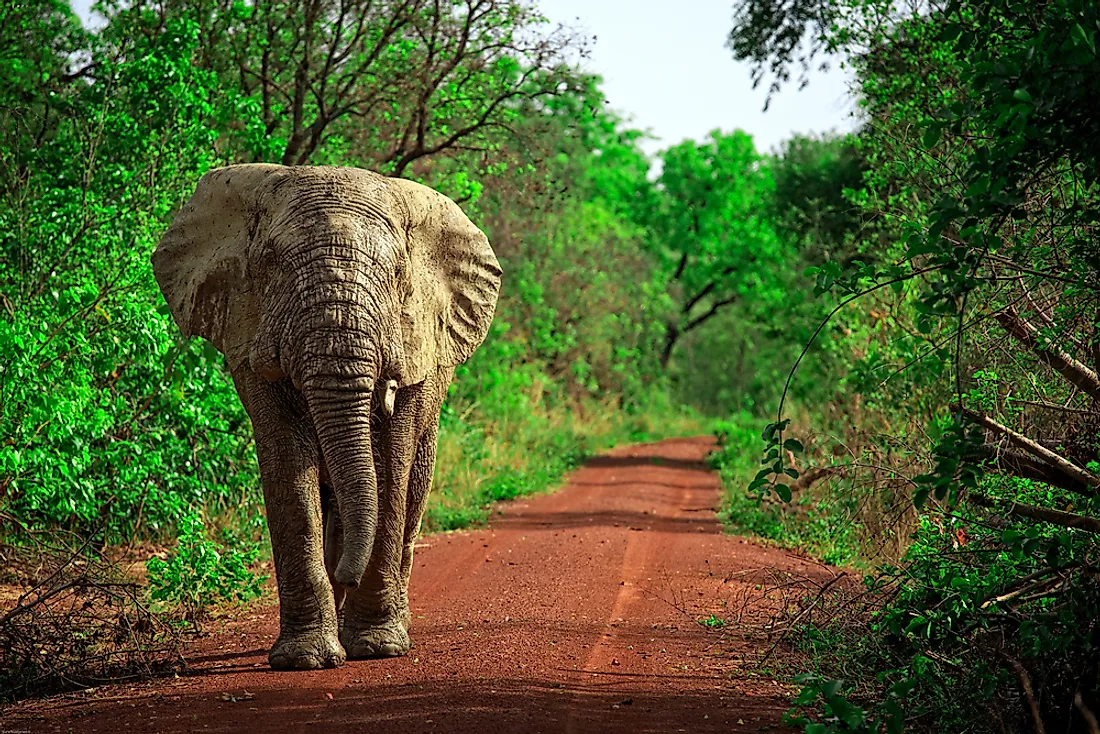
The West African country of Ghana is endowed with a wide range of wildlife that supports the ever-growing eco-tourism sector. The diverse wildlife composed of mammals, insects, birds, reptiles and marine species thrive in different habitats mostly in Ghanaian natural forests and protected areas. Mammals include elephants, leopards, hippos, monkeys, and hyenas. Snakes are common while marine creatures such as crocodiles and hundreds of fish species live along the coast with the Atlantic Ocean and in Lakes Volta and Bosumtwi. Hundreds of insects and bird species thrive in the beautiful scenery of Ghana. Major wildlife parks are Mole and Kakum National Parks. The article below looks at some of the animals that live in Ghana.
10. Aardvark
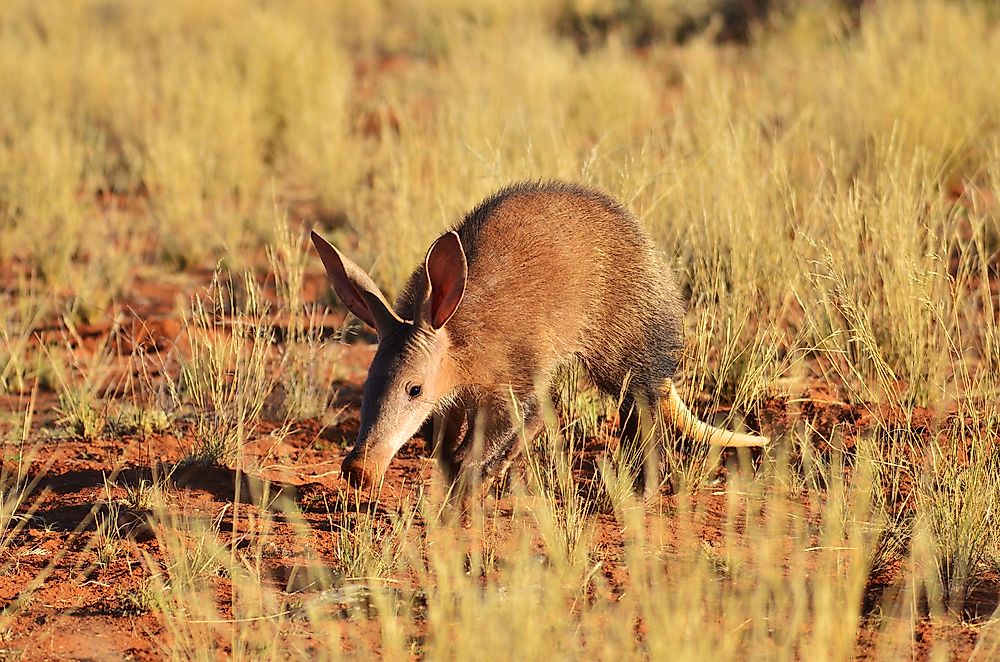
An aardvark is a nocturnal medium-sized mammal found in Africa with quite a huge population native to Ghana. The insectivorous animal sniff termites and ants with its pig-like snout before burrowing with its sharp claws. The solitary mammals’ only pairs during mating leading to the birth of a single offspring after a gestation period of 7 months.
9. Hippo
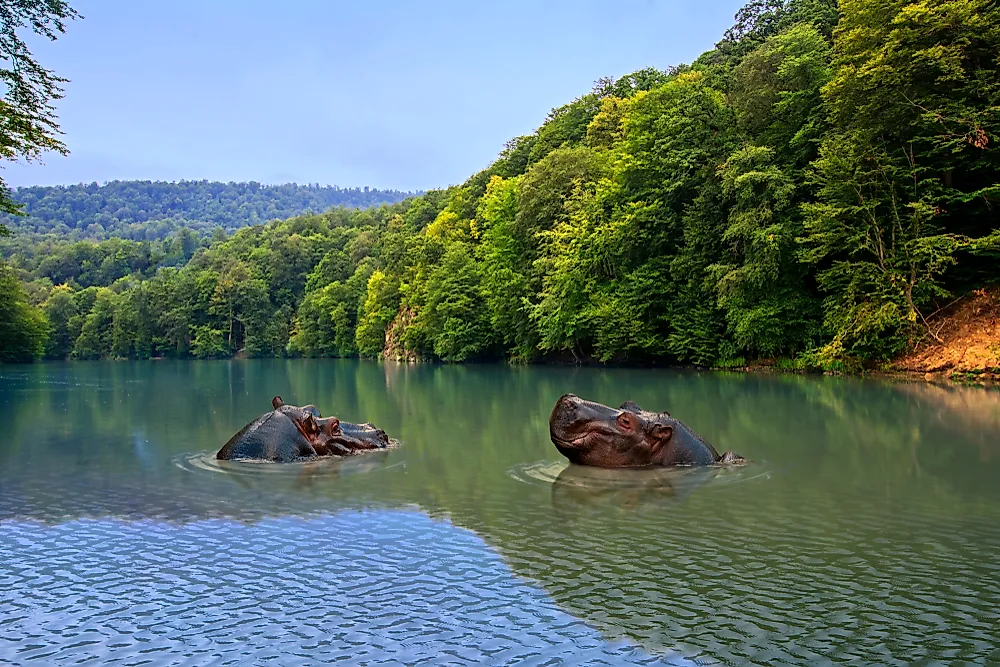
Hippos are can be found in the Wechiau Sanctuary in Ghana along the Volta river. Hippopotamus has a barrel-shaped hairless torso and can open their mouths to reveal large canines. Despite their stocky robust morphology and short legs, hippos can run very fast. They are rated as highly aggressive and unpredictable hence dangerous.
8. Patas Monkey
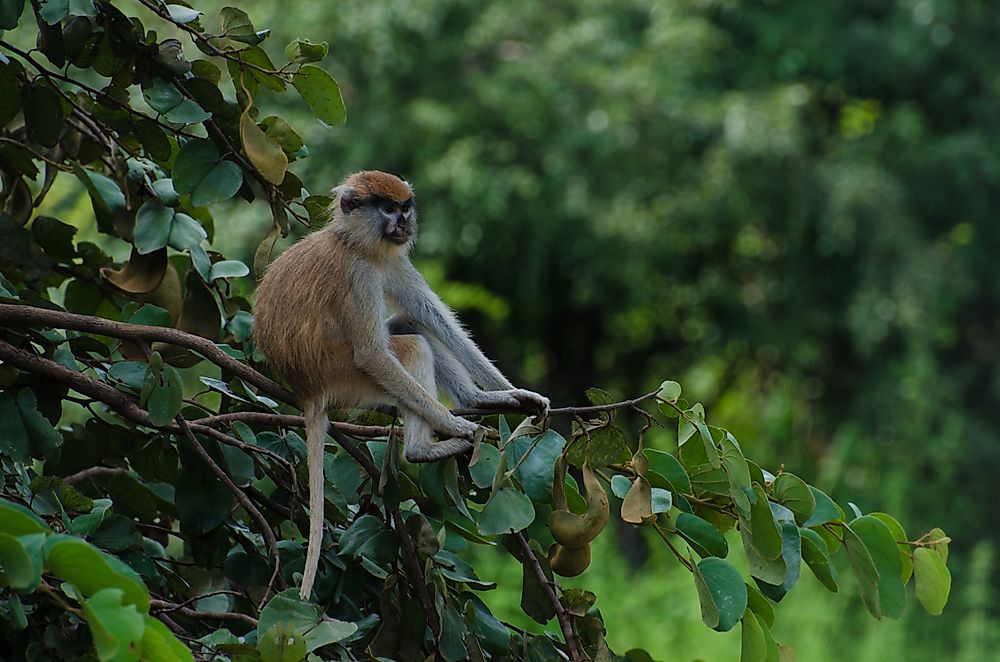
Patas monkeys are conserved in Tafi Atome conservancy found in the Volta region. The unique feature is that the Patas dwell on the ground and rarely take refuge on top of trees like other monkey species. Patas monkeys are held sacred by Ghanaians hence not endangered.
7. African Giant Snail
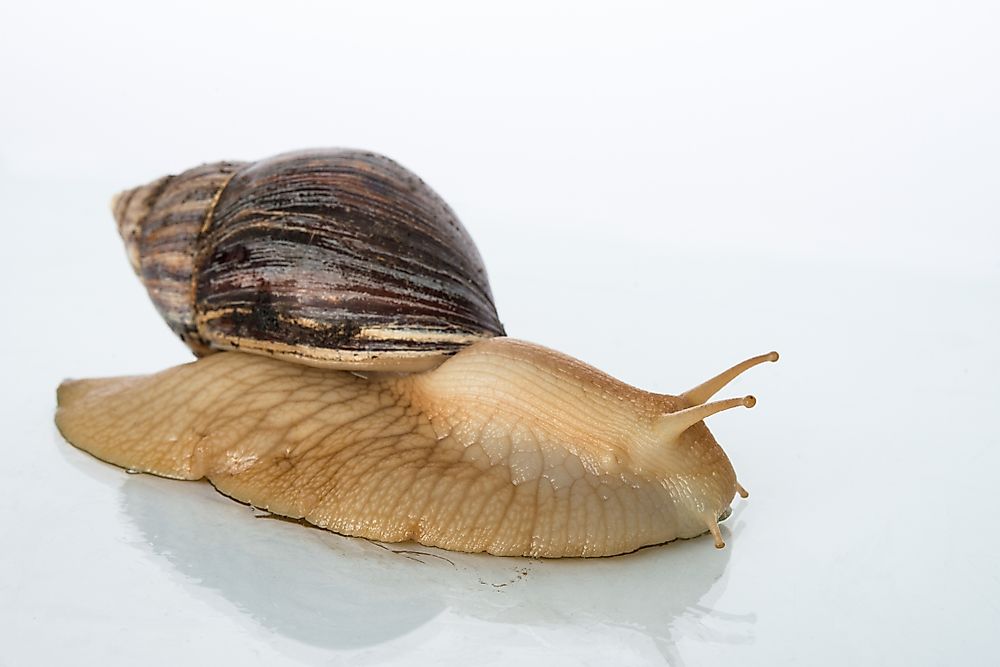
The Giant African Snail is also known as the Giant Tiger Land Snail and Giant Ghana Snail. They are found only in West Africa including Ghana. They can grow up to 18 cm in length and are thought to be the world's largest land snail. Due to their large size they are considered an important source of protein in Ghana.
6. African Civet
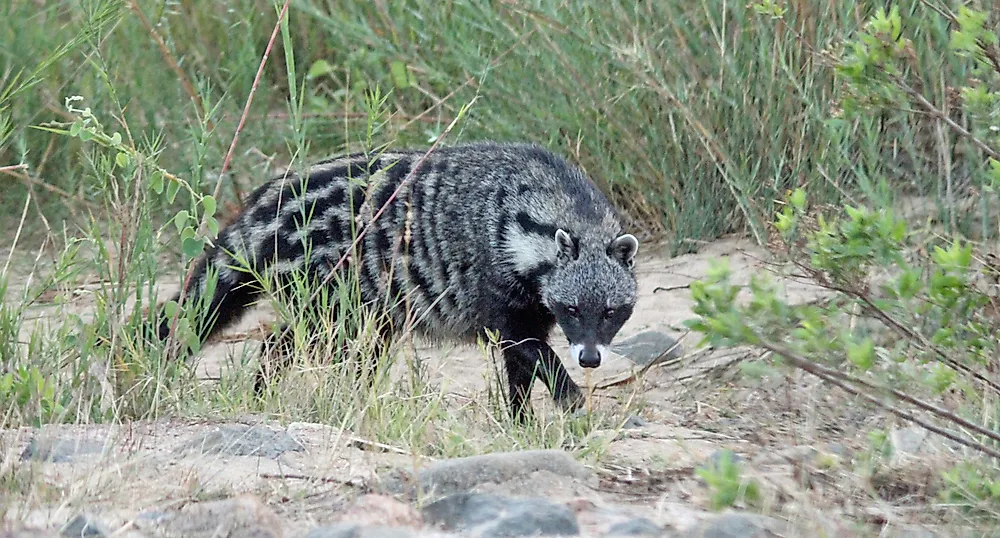
The African Civet is a solitary nocturnal mammal found in the thick vegetation along riverine habitats of Ghana. It has a unique coloration of white and black stripes. African civets are able to form camouflage because of their course pelage of blotches. The omnivorous creatures produce civet fluid from their perineal glands which it uses to mark its territory.
5. Mongoose

Mongoose thrives in the wild forests of Ghana. They have a long face, short legs, round ears, and a long bushy tail. The unique feature is the presence of acetylcholine which prevents neurotoxin venom produced by snakes from attaching to them. Such immunity from venom enables them to kill and eats snakes.
4. Lion

The number of lions in Ghana is low except for some which can be sighted in Mole National Park of Ghana. Their population is negligible hence they are classified as endangered species.
3. African Bush Elephant
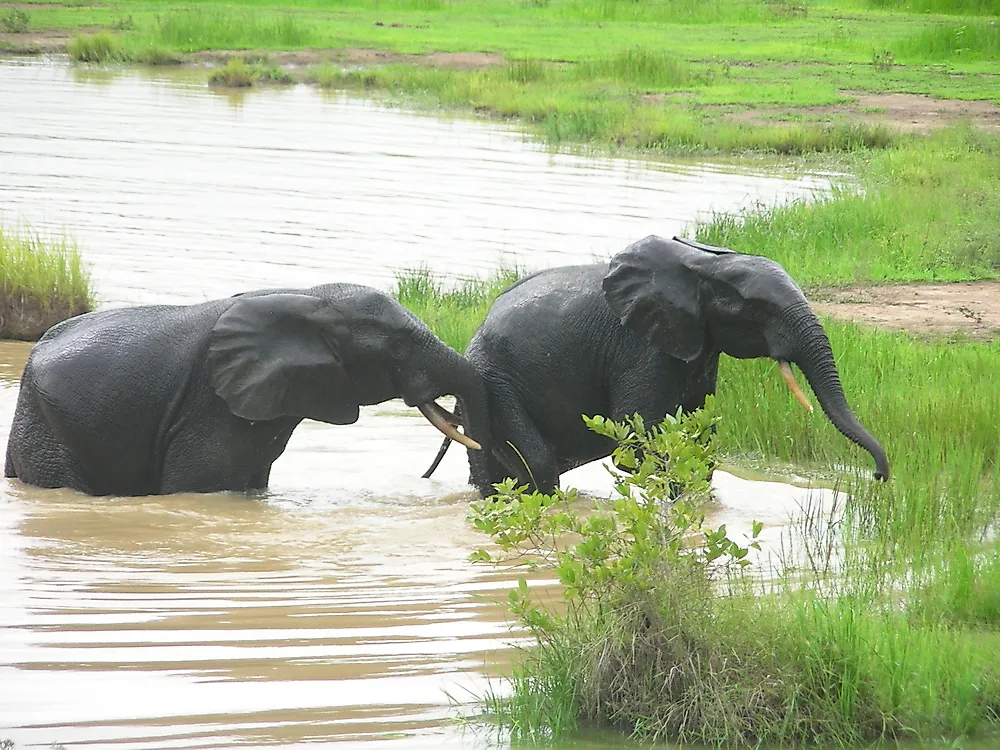
The African bush elephants are found inside the Mole National park. Also known as the savannah elephant, the mammal is the largest terrestrial animal alive. The social animals’ lives in herds although adult males are secluded from the main herd. Their distinctive feature is the trunk which can lift objects of enormous mass. Their tusks enable them to dig, put marks, feed and lift objects. The Elephants are hunted down for ivory making them an endangered species.
2. Zebra

There are not many zebras in Ghana today. One has to travel to remote regions to have a glimpse of a zebra. Each zebra has unique stripes of black and white which no other zebra has such prints in the world. Zebras are endangered through the interference of their natural habitat.
1. Antelope
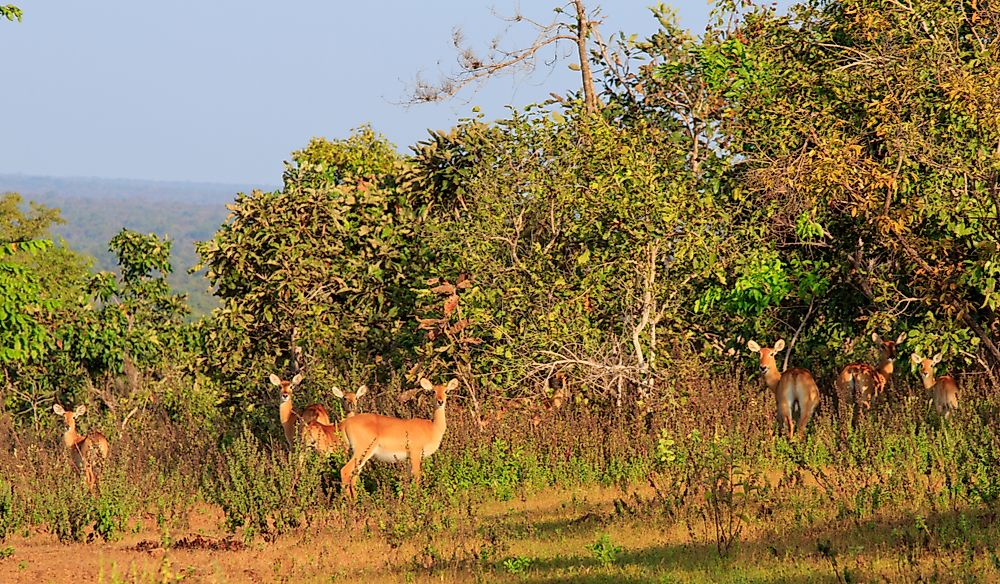
Antelopes live in herds across savanna grasslands of Ghana. The herbivorous, ruminant mammals are able to escape predators by running fast using long strides enabled by their long, powerful legs. They also have very keen senses of hearing, smell and vision.











